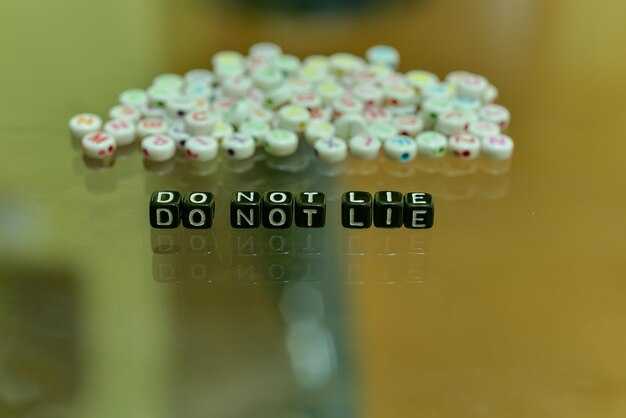Getting rid of things won’t magically fix your life. That’s the hard truth. We’ve been sold an appealing story by books, influencers, renovation shows and endless Instagram pictures: get rid of enough stuff, sort your makeup, make your wardrobe look like a boutique, and suddenly everything else will line up — anxiety will disappear, relationships will repair themselves, you’ll become focused, productive, serene, lovable, and the right person will arrive as if by fate. But healing rarely works like that. Tidying can feel transformational, yet most of the time it’s simply doing something—useful, yes, but often nothing more than rearranging the deck chairs on a ship. It can be a distraction, a stand-in for the much harder work of noticing, naming, and letting go of the fear and rage that keep you stuck, overwhelmed, and unable to manage the external clutter of your life. When the thoughts, feelings, and possessions pile up faster than you can process them, decluttering turns symbolic: it lets you pretend progress is happening while the core issues remain untouched. I’m not dismissing decluttering entirely. In fact, one of my most-watched videos argues that clutter can be a symptom of trauma — it’s had millions of views. Decluttering can be a step in healing, but it’s often an effect, not the cure. When trauma is addressed, letting go of excess becomes easier and more natural. Visual calm does soothe the nervous system a little; clearing a room can bring a lightness and a sense of space that feels good. But that short-lived relief is atmospheric — not the deep peace that comes from resolving inner conflict. Relief is the temporary absence of stimulation; peace is an internal state that arrives when you face what you’ve been avoiding. So ask yourself: what am I avoiding? A messy home is not a moral failing, though people often conflate tidiness with goodness. I grew up in disorder and, after leaving, lived in a home that became severely cluttered. Conversely, a spotless house doesn’t guarantee everything is okay. Shame about mess is common because as children many of us were punished, shamed, or humiliated for disorder, and we carry that shame into adulthood. That pressure can drive us to make our spaces flawless as a way of proving our worth. Yes, a clean environment can lift your mood and make it easier to be the person you want to be — that renewed capacity is part of healing — but when cleaning becomes compulsive, it’s representing something else: a frantic effort to control feelings of shame, unworthiness, or fear of being judged. Some people express trauma by compulsive tidying. The moment a sock falls out of place, a panic can rise: What if someone sees this? What if I’m like my parent? What if I’m broken? So what looks like housework is often an attempt to manage the terror of feeling unlovable or helpless. That’s why decluttering can be constructive, but it can also become an obsession or even a fetish—an image of perfection used as a shield. Those staged backdrops on video calls or perfectly curated Instagram corners make me uneasy; I prefer the warmth and truth of a real room with a little lived-in unevenness, because that human touch feels creative and possible. Preferences differ. Some people find sterile order comforting; others thrive in creative mess. For example, while writing a book my workspace turned into a paper-strewn chaos — piles I convinced myself I’d need forever. When the project finished, most of it went straight into recycling and it felt liberating. I naturally like printed pages and take lots of notes — fears, resentments, plans — which creates paper clutter. My partner and I manage those habits practically: I have a box, he made a lidded one where he drops my loose items — lipstick, stray keys, an old car registration. When I need something, I dig through and find it. Couples often have different tolerances for clutter and have to negotiate what level is acceptable; that’s normal. But if tidying consumes your relationships, sleep, or peace of mind, then it’s become harmful and you’ve gone too far. If shame about mess from past experiences runs deep, the stakes feel high. Decluttering can itself become a trauma response: trauma can drive a need for control. When life has felt unsafe or chaotic, rituals of order can be a way to manufacture safety. It isn’t about loving minimalism; it’s about controlling an environment when other parts of life felt uncontrollable. You focus on dishes, socks, and lists because those things are manageable. But those tasks regenerate — you may feel productive, yet beneath the surface you’re avoiding grief, intimacy, anger, or acknowledging parts of life that never went well. You can scrub floors and clear closets, but that won’t heal heartbreak, neglect, or the ache of not being chosen or protected. Decluttering gives a temporary high: a hit of control and competence that fades, returning the shame and the feeling of being overwhelmed. So you purge again and again, but it never fully satisfies because the real issue is unprocessed emotion — the sadness, fear, and unresolved experiences you hoped would vanish over time. That internal burden is the true mess, not the attic or the junk drawer. If you never address it, you’ll keep trying to fix things externally and remain anxious and heavy despite a simplified environment. Real peace doesn’t come from a perfect house; it comes from a regulated nervous system, truthful relationships, grieving losses, honoring what you never had, and speaking honestly about your life. Decluttering can provide momentary calm, but lasting peace comes from doing the slow, unglamorous work: writing the feelings that trouble you, facing them, asking to release them, sitting in meditation, and allowing yourself to cry if that’s what you need. Letting tears fall while you write can be deeply cleansing. If you suspect past trauma affects your present, notice the signs — it helps to realize your struggles are understandable and healing is possible. You can download a checklist for signs of childhood PTSD via the top link in the description or the QR code shown. Likewise, there’s a free short course with two simple daily practices that calm you when you’re triggered; it’s quick and powerful and helps you feel clearer and more focused fast. Access it through the second link in the description or the QR code. That is the kind of inner decluttering that actually transforms you. You can’t organize your way into self-worth, secure attachment, or healed parts of yourself. Healing isn’t about removing discomfort but about discovering the triggers that toss you into distress, setting boundaries, learning to tolerate what you choose to tolerate, and not escaping into avoidance through external activity. Sometimes that means letting the house get messy while you sit and write down your fears and resentments, letting laundry wait while you allow yourself to grieve, or sitting on the floor and breathing through a panic attack before returning to the chores. That’s not failure — that’s progress. If your home feels overwhelming and you think the only answer is to purge everything, pause and look inward. What emotions or resentments are you trying to tuck away? What story are you telling yourself about what the clutter means? Are you decluttering as a healing practice or as camouflage? Tidying can be therapeutic when it comes from a place of care and wholeness — done gently, slowly, and without shame. You don’t have to toss everything to find peace; you only have to stop running. Mess will return — people live and play and grieve and projects accumulate. That’s life, not a lack of discipline. When your worth isn’t tied to how spotless your space is, you get to rest, be imperfect, and connect with others. A home doesn’t need to be immaculate to be sacred; you don’t need minimalism to be free. Instead, be honest with yourself: what is bothering me right now, and can I write it down and let it go? The daily nervous-system practices I mentioned are listed in the description under the second link if you want to work with patterns that keep you chasing a perfect environment as a substitute for inner healing. You have always been enough — even with mess, clutter, and unfinished parts of life. The peace and self-worth you seek are already beneath the noise and the panic, waiting for you to stop striving and come back to yourself. I used to feel chased by an emotion I pictured as a pack of wolves — usually sadness — and naming it helped me face it. That acknowledgment matters. [Music]
Practical, Trauma-Aware Tools for Working with Clutter

Below are specific, gentle practices you can use immediately—practical steps that respect both practical need and emotional safety. Use what feels doable; skip what feels overwhelming.
Short, safe decluttering rituals
- Three-minute check-in: before touching anything, pause for 3 minutes. Breathe, name the feeling (e.g., “I notice anxiety”), and ask, “What is the smallest useful task I can do right now?”
- 15-minute box method: set a timer for 15 minutes and pick one zone—a single drawer, one shelf, or one corner. Sort quickly into three piles: keep, donate/sell, recycle/trash. Don’t aim for perfection.
- The “maybe box”: for items you’re unsure about, put them in a sealed box labeled with a date 3–6 months in the future. If you don’t need the items by that date, let the box go.
- One-in, one-out: to slow reaccumulation, adopt a gentle rule—bring in a new item, let go of one old item. Apply only where it feels manageable.
Emotional-first approach
- Journal before you purge: spend 5–10 minutes writing what you’re feeling and what you hope will change after decluttering. This separates the emotion from the action.
- Use grounding when panic arises: try box breathing (inhale 4 counts, hold 4, exhale 4, hold 4) or the 5-4-3-2-1 grounding exercise (name 5 things you see, 4 you can touch, 3 you hear, 2 you smell, 1 you taste).
- If tidying triggers shame or flashbacks, stop and practice a short regulation skill (deep breathing, a warm drink, a walk) before continuing.
Daily micro-habits that reduce overwhelm
- Ten-minute tidy: set a daily 10-minute timer to do small, visible tasks—empty one bin, put away dishes, fold one laundry load. Consistency reduces the need for heroic purges.
- Visible boundaries: create a few designated landing spots (a tray for keys, a basket for mail) so clutter has a home and surfaces stay clearer.
- Shared systems for households: negotiate one non-negotiable (for example, dishes done before bed) and one flexible area where mess is allowed.
When decluttering is avoidance or compulsion—signs to notice
- It takes over relationships, interrupting connection or intimacy.
- You lose sleep or neglect responsibilities because of cleaning episodes.
- You purge repeatedly and still feel unrelieved, or you become distressed if prevented from cleaning.
- You use decluttering to avoid feelings, conversations, or actions that feel unsafe to face.
Communication tips for couples and housemates
- Describe your needs in concrete terms: “I need the living room clear by 9 p.m. so I can relax,” rather than “You’re messy.”
- Agree on one shared priority and one personal zone where each person can keep things their way.
- Use a “compassion pause”: if tidying becomes an argument starter, pause and schedule a 20-minute time to discuss solutions rather than solving in the moment.
Self-help practices that support inner decluttering
- Journaling prompts: “What am I avoiding?”, “What does this item remind me of?”, “If I kept only what supports my current life, what would that look like?”
- Regular small grief practices: allow yourself to name losses (big or small) and mark them—light a candle, write a letter that you don’t have to send, or take five minutes to sit with the feeling.
- Daily nervous-system reset: short practices like 3 minutes of paced breathing, a 5-minute mindful walk, or a progressive muscle relaxation can reduce the urge to control externally.
Quand demander l'aide d'un professionnel
- If decluttering is tied to panic attacks, intrusive memories, or intense shame that interferes with functioning, consider a therapist trained in trauma-informed care.
- Therapies that help with trauma-related avoidance and regulation include trauma-focused CBT, EMDR, somatic experiencing, IFS (Internal Family Systems), and DBT skills for distress tolerance—ask potential therapists about their trauma training.
- If you ever feel at risk of harming yourself or others, contact local emergency services or a crisis line immediately.
Finding balance
Decluttering can be kind and practical without becoming a cover for unprocessed emotion. Pair small, achievable organizing tasks with inner work: name your feelings, practice simple grounding, make space for grief, and reach out for support when needed. Over time, as your nervous system calms and you attend to what you’ve been avoiding, you’ll notice that letting things go becomes easier and less loaded. The goal isn’t a museum home—it’s more room in your life for connection, creativity, and rest.
If you want a short starter plan: 1) Spend five minutes journaling about what you hope will change; 2) Do one 15-minute focused declutter session with a timer; 3) Practice a 2-minute breathing reset; 4) If powerful emotions come up, pause the cleaning and sit with them or reach out to someone you trust. Repeat gently, without shaming yourself. Healing and tidying can happen alongside each other—but true, lasting change happens when you learn to sit with the feelings behind the stuff.


 The Truth About Decluttering: What Nobody Tells You (But You Need to Hear)">
The Truth About Decluttering: What Nobody Tells You (But You Need to Hear)">

 What Life Looks Like When You Love An AVOIDANT (4-Video Compilation)">
What Life Looks Like When You Love An AVOIDANT (4-Video Compilation)">
 Will you stay together or break up? Take this test">
Will you stay together or break up? Take this test">
 4 Powerful Emotional Stages Avoidants Face When You Finally Step Back | Avoidant Attachment Style">
4 Powerful Emotional Stages Avoidants Face When You Finally Step Back | Avoidant Attachment Style">
 CPTSD Could Be the Reason You Struggle to GET THINGS DONE">
CPTSD Could Be the Reason You Struggle to GET THINGS DONE">
 Relationships Require Work!">
Relationships Require Work!">
 Never Admit THIS to an Avoidant… Or They’ll Vanish Forever">
Never Admit THIS to an Avoidant… Or They’ll Vanish Forever">
 The Hidden Trauma Symptom That’s Sabotaging Your Life">
The Hidden Trauma Symptom That’s Sabotaging Your Life">
 WHEN THEY REACH OUT, IT’S NOT LOVE, IT’S FEAR: Painful Truth About Avoidant Comebacks | Mel Robbins">
WHEN THEY REACH OUT, IT’S NOT LOVE, IT’S FEAR: Painful Truth About Avoidant Comebacks | Mel Robbins">
 She’s in the MOOD for…">
She’s in the MOOD for…">
 When Your Silence Breaks an Avoidant’s Armor — Here’s the Truth They Won’t Say | Best Motivational">
When Your Silence Breaks an Avoidant’s Armor — Here’s the Truth They Won’t Say | Best Motivational">